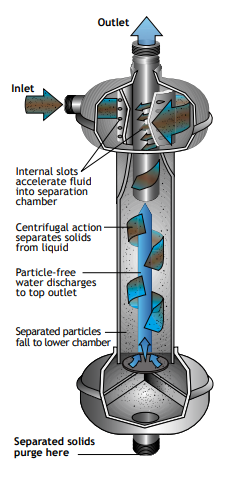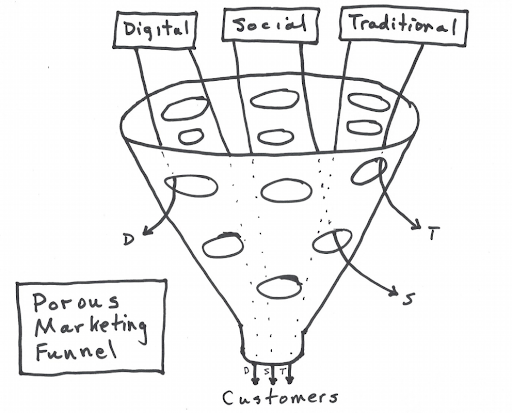Is the Marketing Funnel Porous?
Marketers and sales professionals often talk about understanding and using a “marketing funnel”. This phrase is so ingrained into our day-to-day language that we assume that our language reflects reality. But maybe this isn’t the case. Maybe it isn’t a funnel - maybe it is more like a sieve.
This became abundantly clear when I was talking about our software, Revenue Catalyst, with my cousin. I was describing the layout of a typical marketing funnel. I explained that there were levels that a customer had to go through depending on the activities that were related to marketing activities or sales. At the top marketing tactics generated Impressions from ads and various advertising campaigns. I continued by describing that a portion of these converted into Visits, typically to a website page. I went on to say that some of these Visitors converted into Prospects of which a portion was presented with an Offer. Finally, a percentage of those who received the Offer were sold something and became Customers. It all seemed straightforward to me and could be visually illustrated to look something like this:
My cousin, Hjalmer Nelson, looked at me and said, “Oh, you mean an accelerated particle separator”.
I said, “What?” and he repeated, “An accelerated particle separator.” My mind didn’t process new information very quickly, but I could hear something in his words that made sense. Even after he had repeated the phrase twice, I had to ask him to explain. He proceeded to tell me a story about the Gulf War, sand everywhere, tanks, air filters not working, engines stopping, and the invention of accelerated particle separators to separate sand from air before the air got sucked into the engines. The result was that army tanks could travel for miles across the sandy desert as easily as going down a paved road with no dust or sand.
I was fascinated. From a marketing point of view, what he was saying was that what we flippantly call a marketing funnel is in fact an “accelerated customer separator”, although I’ll admit that the “accelerated” part of that phrase is often not very fast and prospects become customers much slower than desired.
I did some research on Google and I found very little written or diagrammed on this topic. As a result, I made my own diagram.
Imagine a funnel with a bunch of holes in the side. It should look something like a colander, but more V-shaped and with a big hole in the bottom. Imagine various marketing and advertising tactics illustrated at the top such as TV, radio, Facebook, SEO, AdWords, and even Snapchat. These ads influence prospects in the target market and they start to fall out the sides of the porous funnel. Some get to the bottom and become customers, but others are lost at the top and middle of the funnel via the holes. A diagram of this “porous marketing funnel” would look something like this:
If you can imagine the funnel spinning, then some of the prospects would exit the system very quickly at the top. Others would cling on longer and get lost further down the funnel. Ideally, an adequate percentage of prospects would flow all the way through, with some coming out the bottom as customers.
Here’s another perspective. A while back I read Jordan Belfort’s book Way of the Wolf. A movie with Leonardo DiCaprio was later made called, The Wolf of Wall Street. In the book, Belfort describes 4 types of prospect archetypes as follows:
Buyers in Heat
These are motivated buyers who want your product and can afford it
They want to buy now
Buyers in Power
These are buyers but they are not ready to buy because their pain is not acute
They are going to delay the decision and need more coaxing
Lookie Loos
These are “tire kickers” who are just trying to get more information
They are unlikely to buy, ever
They are time wasters who need to be weeded out quickly
Mistakes
These people never belonged in the funnel but somehow got attracted or dragged in for the wrong reasons
There is no chance of turning these people into customers
If we apply our concept of an ”accelerated particle separator” then the funnel would look something like this:
Do you agree with this concept? Is there any validity? Let me know what you think.


